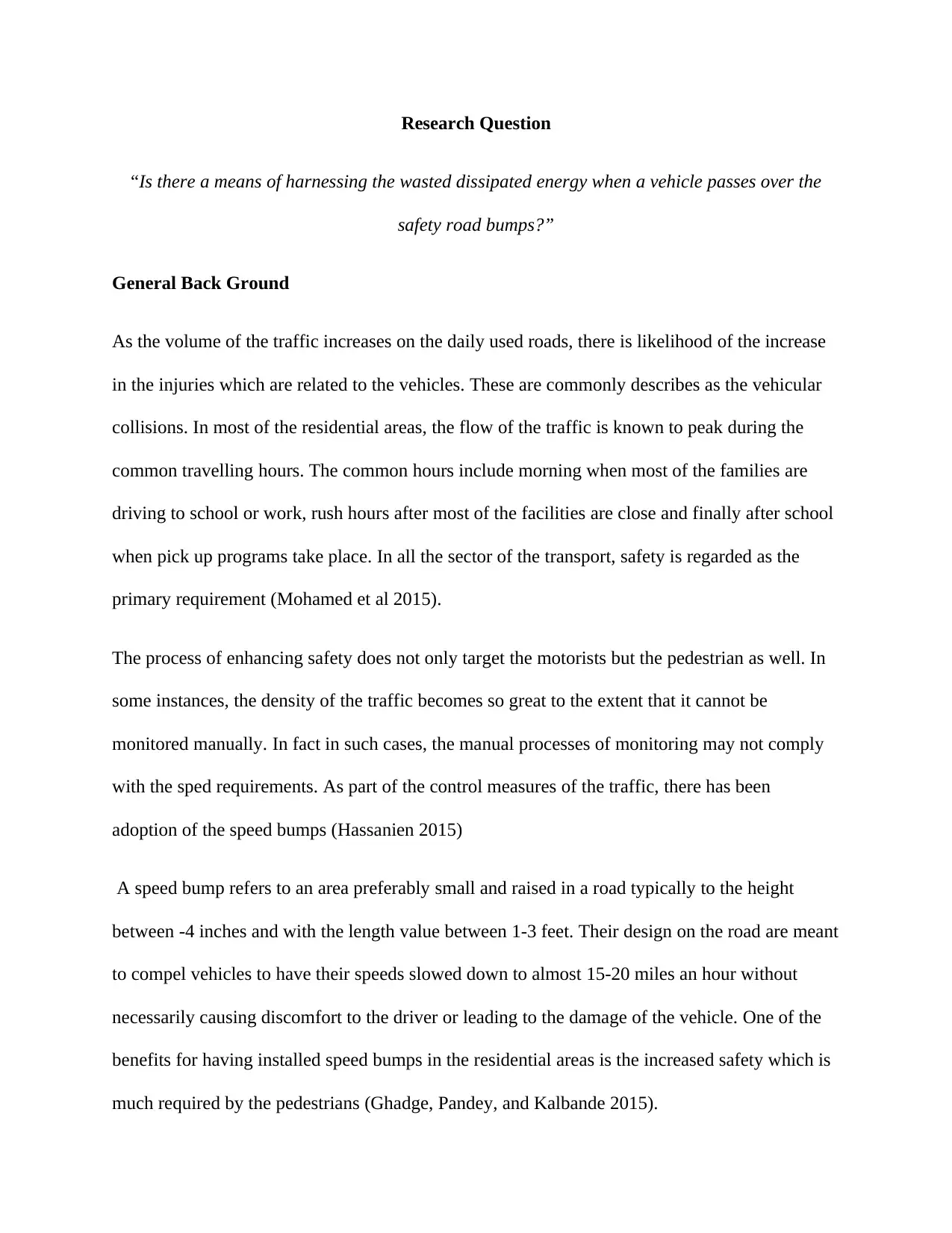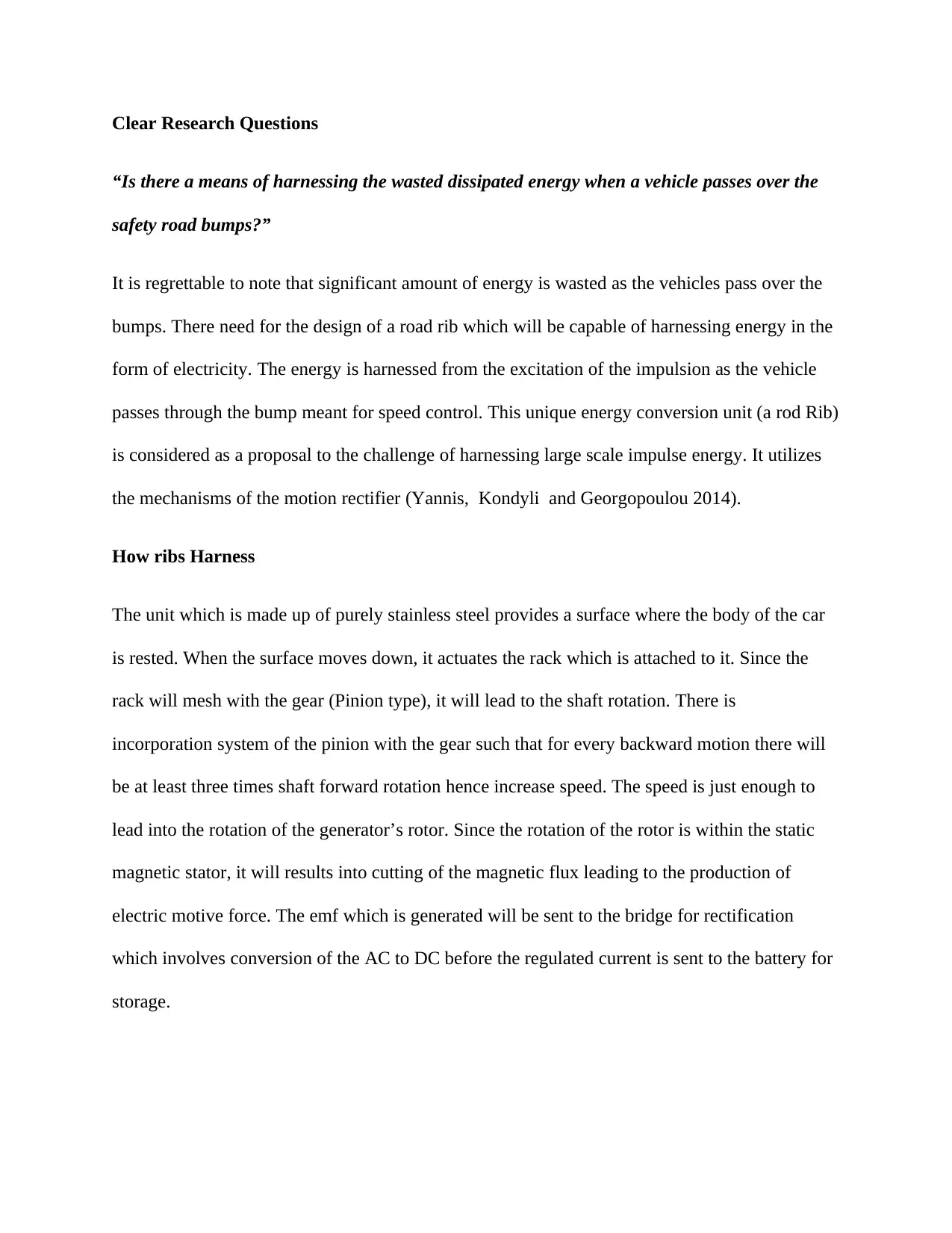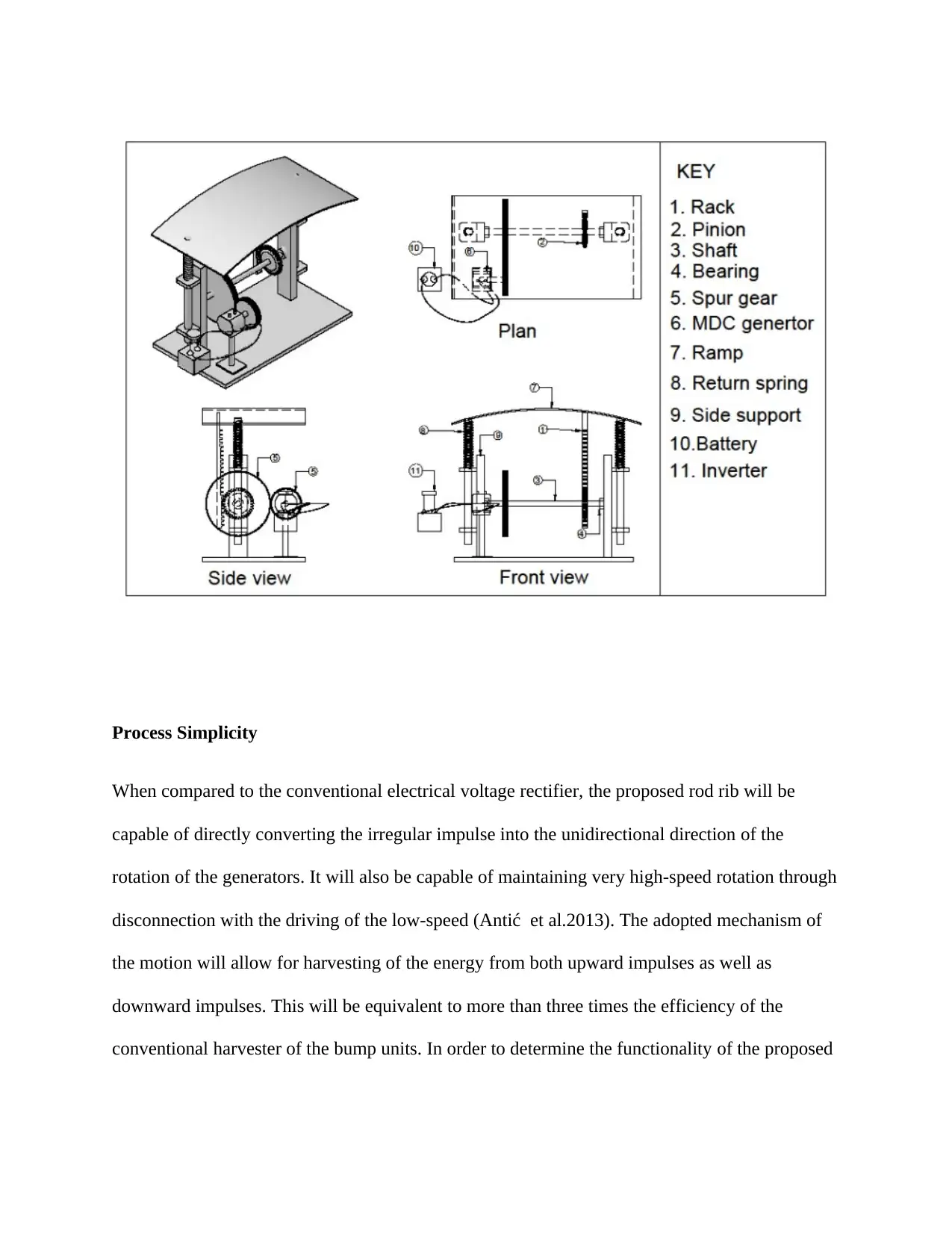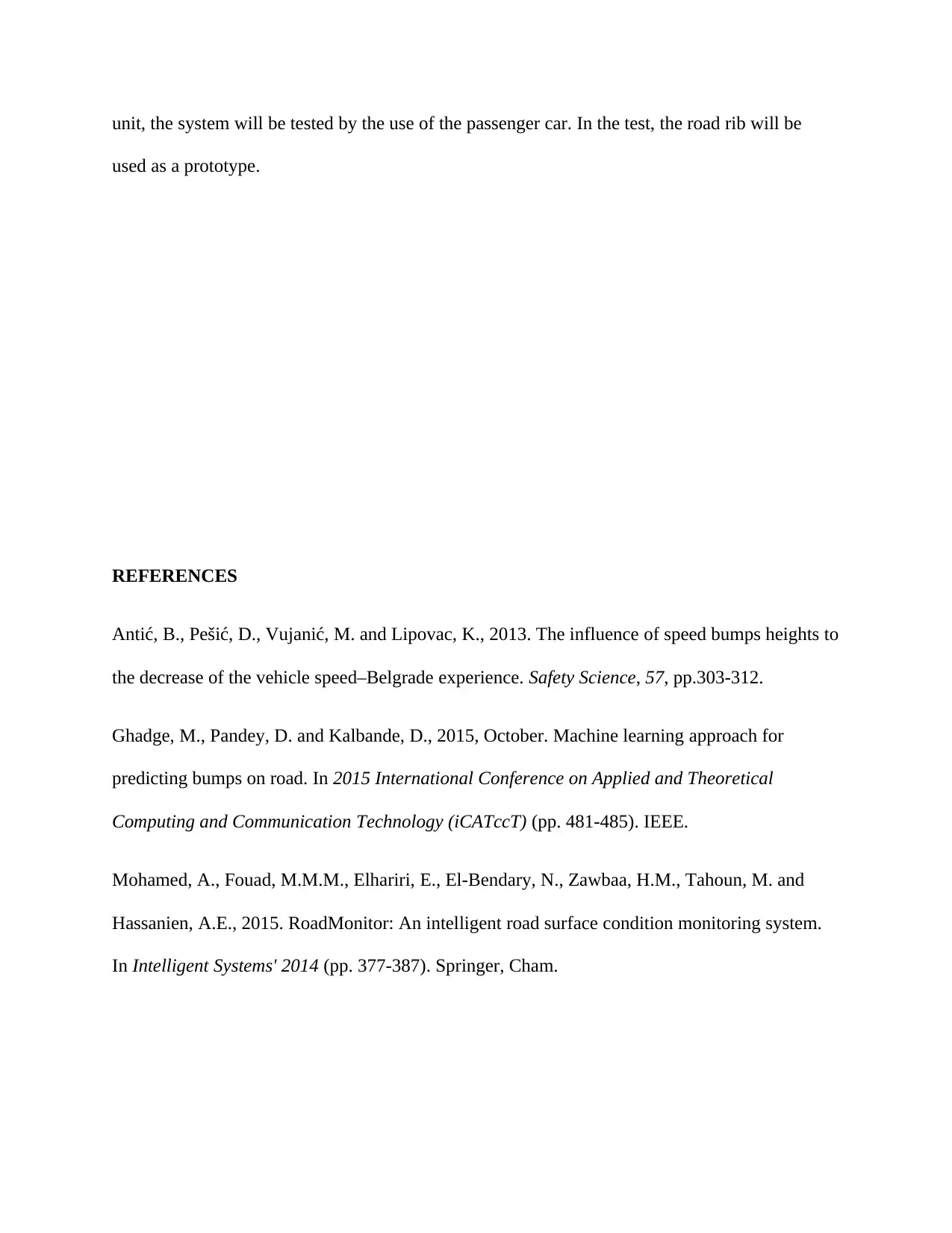Engineering Research Practice: Road Bump Energy Harvesting Analysis
VerifiedAdded on 2022/12/12
|6
|975
|325
Homework Assignment
AI Summary
This assignment presents a student's research on the potential of harvesting energy from road bumps to generate electricity. The research addresses the issue of wasted energy dissipated when vehicles pass over speed bumps, proposing an innovative road rib design to convert kinetic energy into electricity. The student's research outlines the general background of the problem, the clear research questions, and the proposed method of harnessing energy using a stainless steel unit. This unit utilizes a motion rectifier to convert the irregular impulse into the unidirectional rotation of generators, thereby maintaining high-speed rotation and improving efficiency. The research also details the process's simplicity and the testing methodology involving passenger cars. The assignment is based on the Engineering Research Practice course and includes references to relevant literature.
1 out of 6








![[object Object]](/_next/static/media/star-bottom.7253800d.svg)